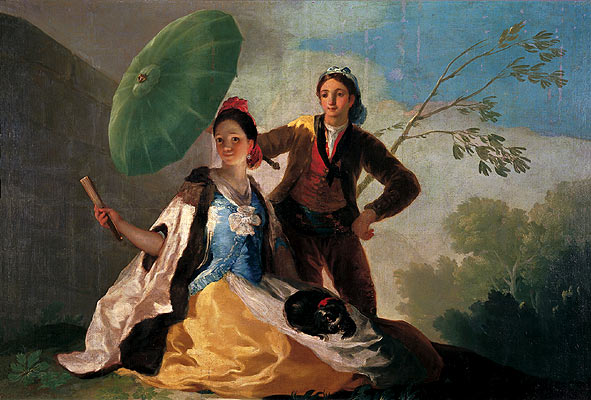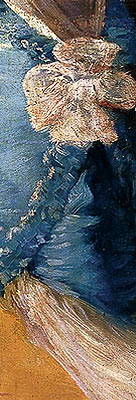
beautyme collections culture cuisine motor music search
Francisco
de Goya: 1746 - 1828
Kunsthistorisches
Museum, Vienna, Austria 18 October 2005 - 8 January 2006 www.goyainwien.at
fig.:
El quitasol/The Parasol/Der Sonnenschirm around 1777.
© Museo Nacional del Prado, Madrid (Cartoon for the tapestry of
the same title)
The costumes
on Goya's cartoons for tapestries are the colorful documents of Rococo
fashion. In 1775 Goya works for the royal tapestry manufactory in Spain.
Goya captured idyllic scenes for the tapestries - but they show much
more than sketchy Rococo playfulness. The painter sympathised
with the Enlightenment. Is the scene on this cartoon influenced by
such a prominent Enlightenment philosopher
as Jean-Jacques Rousseau? The lady is dressed in the typical peasant-style
of the Enlightment. Rousseau's "back to nature" philosophy
influenced the French Revolution, the development of communist and socialist
theory. Has Goya captured the changes of society in this cartoon? The
young lady smiles seductively, the young man (he wears the typical trousers
of the working-class, which are later the signs for the revolutionary
"Sans-culottes") positions the parasol cleverly to protect
her from the sun and the rising wind. The wall on the left and the dark
clouds visible above it and the tender tree buffeted by the rising wind
dampen the cheerful sunny mood ... next>>>

